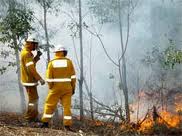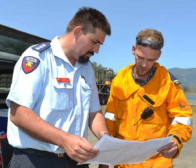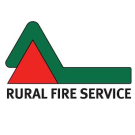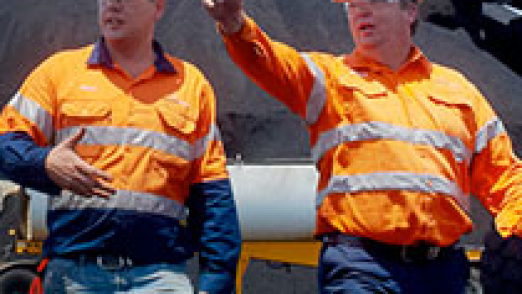Would you know what to do if you heard a bushfire Advice, Watch and Act or Emergency Warning message over the radio? Would you know the difference between the warnings issued or when to enact your bushfire survival plan?
 Rural Fire Service Queensland (RFSQ) South Western Regional Manager Lawrence Laing said during a bushfire incident, different warning messages could be issued to provide valuable advice to residents in an affected area. “Emergency services personnel issue community warning messages through media and social media channels during significant bushfire incidents,†Mr Laing said.
Rural Fire Service Queensland (RFSQ) South Western Regional Manager Lawrence Laing said during a bushfire incident, different warning messages could be issued to provide valuable advice to residents in an affected area. “Emergency services personnel issue community warning messages through media and social media channels during significant bushfire incidents,†Mr Laing said.
“Community warning messages are used to inform residents of threat to properties, time to impact, the direction and strength of the fire and the steps residents must take to survive, and may be heard on the radio or viewed online, as well as via other media channels, he said.
“It’s essential for all Queenslanders to educate themselves and their families and understand the levels of warning now to ensure they aren’t confused or panicked if a community warning is issued for their area this bushfire season. Being properly prepared can increase your chance of survival in an emergency, and knowing how to process these warnings is a part of bushfire preparation.â€Â

Mr Laing said there were three official levels of bushfire warnings which could be issued by Queensland Fire and Emergency Services (QFES) as an event escalated. These include:
Advice †you should monitor conditions and review your bushfire survival plan;
Watch and Act †conditions are changing and you should start taking action and follow your bushfire survival plan;
Emergency Warning †you are in danger and you should immediately act on your bushfire survival plan.
“If a community warning is issued in your area, you must tune into your local news broadcaster as emergency services personnel will be providing local radio with the most up to date information as it comes to hand,†he said. “Warnings are not only distributed by the media or on social media platforms. Firefighters, State Emergency Service (SES) volunteers or police may be doorknocking in the area or you could receive an Emergency Alert message on your mobile or home phone with advice on the situation and where to go for further information. ”
“If you feel that your property or life is threatened by a bushfire you should call Triple Zero (000) immediately.â€Â
Mr Laing said it was also important to keep a close eye on Fire Danger Ratings in your local area and when travelling in an area of high bushfire risk.
“Every day during the bushfire season, the Bureau of Meteorology (BoM) will forecast an outlook of the Fire Danger Index (FDI). This takes into account temperature, humidity, wind speed and dryness of vegetation, and guides QFES to determine the Fire Danger Rating for the day,†he said. “The Fire Danger can range from ‘Low to Moderate’ to ‘Catastrophic’ and can assist you in preparing what actions you might take if a fire were to break out on a particular day.
“All of these methods of messaging are designed to be as informative as possible so you are able to make the best decisions for your family ahead of bushfire threat.
Mr Laing suggests visiting the RFSQ website to learn about community warning messages and Fire Danger Ratings now.
For more information on community warnings messages visit https://ruralfire.qld.gov.au/Fire_Safety_and_You/Prepare.Act.Survive/Index.html
and for information on Fire Danger Ratings visit https://ruralfire.qld.gov.au/FDRG.html
Submitted by:
Jessica Saxton
Media Officer
Queensland Fire and Emergency Services


